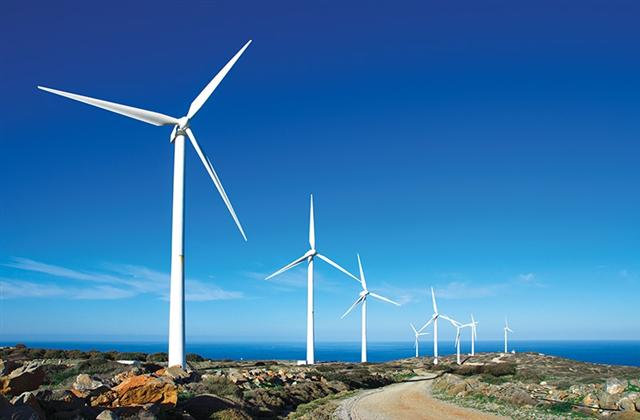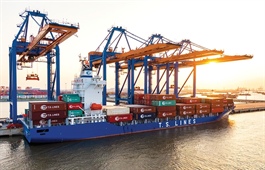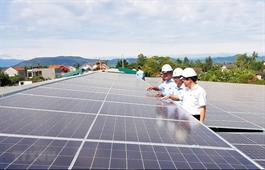Development at stake with FiT alteration
Development at stake with FiT alteration

Vietnam is on the cusp of being the region’s leading wind market, Photo: Shutterstock
|
Last month, the Ministry and Industry and Trade (MoIT) proposed new feed-in tariffs (FiTs). Accordingly, the new rates would apply to projects commissioned from November 2021 to December 2023, with 7.02 US cents per kilowatt hour for onshore wind and 8.47 US cents per kWh for intertidal/nearshore wind.
This represents a tariff slash of more than 17 per cent for onshore wind – which the Global Wind Energy Council (GWEC) says is one of the most dramatic reductions ever seen in any wind power market.
Based on forecasts and experience in other wind markets, a FiT reduction of this size would derail investment in new and planned wind projects in Vietnam and threaten the country’s current position as a leading wind market in Southeast Asia.
Developers already facing delays due to COVID-19 and the general challenges encountered in an early-stage wind market would struggle to close financing, GWEC added, leading to a “bust” period that could reduce new wind installations by up to 80 per cent in 2023 and a further 25 per cent per year thereafter.
The reductions to the project pipeline would create missed job opportunities in the thousands and loss of billions of dollars in inward investment. GWEC estimates that the slowdown would result in around 4GW of total wind power installed capacity in the country’s by 2025 – far below Vietnam’s potential and a likely drastic shortfall from government targets, given the MoIT already records 2.9GW of projects with signed power purchase agreements.
“The wind industry is on the cusp of achieving economies of scale and cost reductions which will make Vietnam the leading wind market in Southeast Asia, but if the proposed FiT is implemented, it would jeopardise long-term development and ultimately result in higher energy prices at a time when the country’s energy demand is soaring,” said Ben Backwell, CEO of GWEC. “We have already seen this happen in wind markets in Europe and the Americas in the past with highly damaging effects, and it is vital that the government of Vietnam avoids creating a similar ‘boom and bust’ cycle so the country can benefit from the cost-competitive prices and socioeconomic benefits wind power can offer.”
Backwell added that throughout the pandemic, wind power has only continued to grow and attract more investment, while other sectors like coal have seen massive demand drops and price fluctuations. “Ensuring the steady growth of wind power in Vietnam is therefore crucial for the long-term resilience of the country’s economy and energy security,” he said.
The current FiT for wind power was introduced in September 2018 and sparked enormous interest from investors and the industry, given Vietnam’s strong wind resource potential, rising power demand, and decarbonisation goals. However, due to the pandemic disruptions, GWEC Market Intelligence has downgraded its 2020 forecast for new wind power installations in Vietnam by 75 per cent to 125MW.
This will bring cumulative wind capacity to only 472MW by the end of this year, which means that the country will miss its target of 800MW of wind power capacity by 2020 set in the Power Development Plan VII by 41 per cent.
An installation rush was expected in 2021 ahead of the expiry of the current FiT, but prolonged delays mean much of the expected volume may spill over into 2022. GWEC has recommended a six-month extension of current FiT levels to allow projects in the current pipeline to come online, followed by a milder FiT reduction for onshore and intertidal/nearshore wind projects commissioned from May 2022 onward.
Mark Hutchinson, chairman of GWEC’s Southeast Asia Task Force explained, “We recognise Vietnam’s efforts in shifting the focus from coal to renewables in order to meet growing electricity needs, and wind power is more indispensable than ever to provide large-scale clean energy and balance the solar influx. Wind has longer project development timelines than solar, and a milder FiT reduction will ensure there is sufficient time to develop a stable project pipeline and supply chain for the wind sector.”
However, he warned that a steep reduction with no consideration for pandemic-related challenges will shrink Vietnam’s wind project pipeline and lead to a likely shortfall of wind targets again in 2025.
“Considering that wind power will be a critical pillar for Vietnam’s decarbonisation and industrialisation strategies, the country simply cannot afford to lose momentum in developing its wind power market,” Hutchinson said.






















